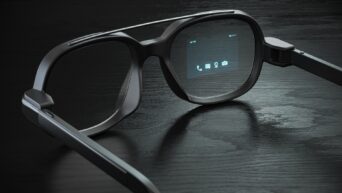A revolutionary new wheelchair was revealed at the Consumer Electronics Show that is meant to help wheelchair-users with limitations in hand and arm mobility.
Tech giant Intel and Brazil-based robot manufacturer Hoobox Robotics has partnered up to create the ‘Wheelie 7,’ a wheelchair that can respond to facial expressions. The machine is run by a special AI that uses machine learning algorithms to process data in real-time, allowing it to direct the movement of the wheelchair.
The main target market of this special wheelchair are quadriplegics, ALS (amyotrophic lateral sclerosis) patients, and even senior citizens who no longer have full control of their motor skills. “The Wheelie 7 intends to provide users with regained autonomy, giving them new independence and control over where they go,” Intel said.
Wheelie 7 uses Intel’s 3D RealSense Depth Camera mounted in front of the wheelchair to detect facial expressions, in addition to its sensors and facial recognition software. The quality of the camera helps the AI to recognize facial expressions regardless of the lighting so that the user can utilize the wheelchair at any time of the day–or night. The system is also supported by powerful Intel Core processors, in order to make sure that the processing happens as quickly as possible.
Although users don’t have to train the AI in order to use it, they do have the option to customize the facial expressions that will be used to control the movements of the wheelchair. These facial expressions will then be used to let the wheelchair know what the user wants to do and which direction to go.
Right now, about 300 people are on the wait-list for the Wheelie 7 kit, though Hoobox Robotics plans to open up 100 more slots. The first 400 users will receive the complete kit for free in exchange for their feedback, as the kit will eventually retail for $300 a month under a subscription model. The prototype is expected to be released this March 2019.
































